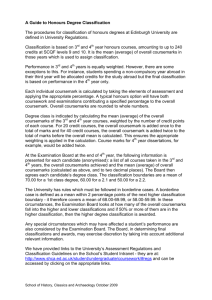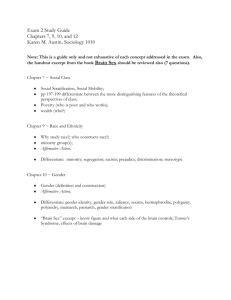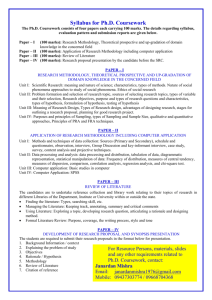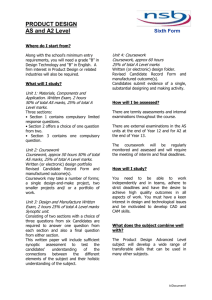Core 3 - Brgs.me
advertisement
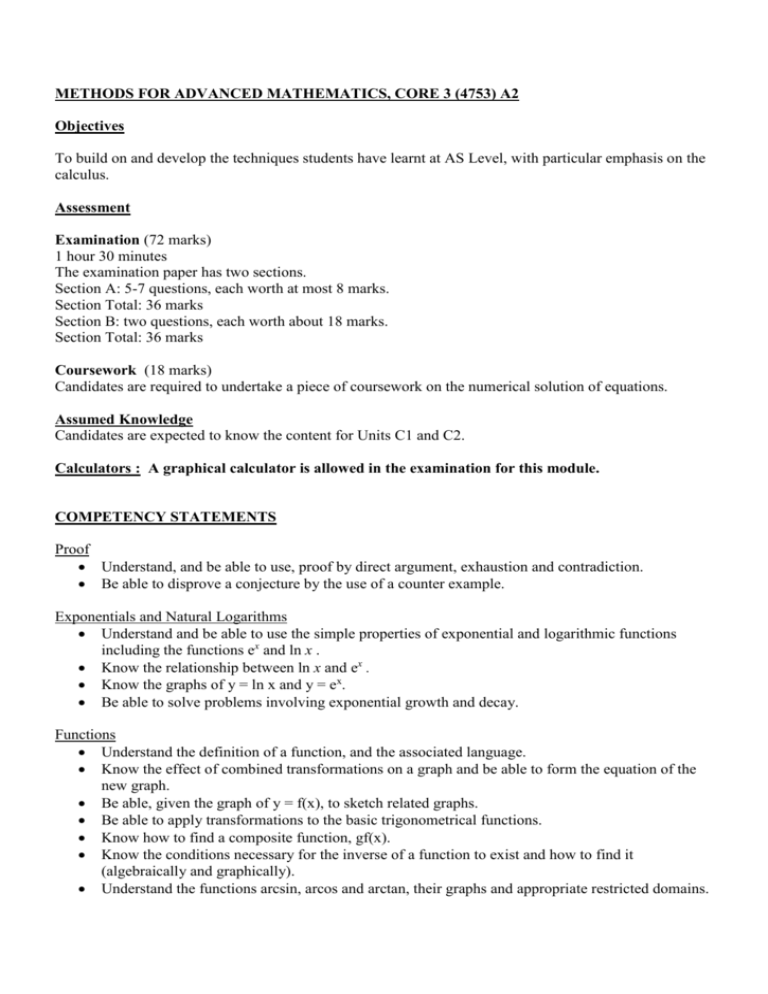
METHODS FOR ADVANCED MATHEMATICS, CORE 3 (4753) A2 Objectives To build on and develop the techniques students have learnt at AS Level, with particular emphasis on the calculus. Assessment Examination (72 marks) 1 hour 30 minutes The examination paper has two sections. Section A: 5-7 questions, each worth at most 8 marks. Section Total: 36 marks Section B: two questions, each worth about 18 marks. Section Total: 36 marks Coursework (18 marks) Candidates are required to undertake a piece of coursework on the numerical solution of equations. Assumed Knowledge Candidates are expected to know the content for Units C1 and C2. Calculators : A graphical calculator is allowed in the examination for this module. COMPETENCY STATEMENTS Proof Understand, and be able to use, proof by direct argument, exhaustion and contradiction. Be able to disprove a conjecture by the use of a counter example. Exponentials and Natural Logarithms Understand and be able to use the simple properties of exponential and logarithmic functions including the functions ex and ln x . Know the relationship between ln x and ex . Know the graphs of y = ln x and y = ex. Be able to solve problems involving exponential growth and decay. Functions Understand the definition of a function, and the associated language. Know the effect of combined transformations on a graph and be able to form the equation of the new graph. Be able, given the graph of y = f(x), to sketch related graphs. Be able to apply transformations to the basic trigonometrical functions. Know how to find a composite function, gf(x). Know the conditions necessary for the inverse of a function to exist and how to find it (algebraically and graphically). Understand the functions arcsin, arcos and arctan, their graphs and appropriate restricted domains. Understand what is meant by the terms odd, even and periodic functions and the symmetries associated with them. Understand the modulus function. Be able to solve simple inequalities containing a modulus sign. Calculus Be able to differentiate the product of two functions. Be able to differentiate the quotient of two functions. Be able to differentiate composite functions using the chain rule. Be able to find rates of change using the chain rule. Be able to differentiate an inverse function. Be able to differentiate a function defined implicitly. Be able to differentiate eax and ln x . Be able to differentiate the trigonometrical functions: sin x ; cos x ; tan x . Be able to use integration by substitution in cases where the process is the reverse of the chain rule. Be able to use integration by substitution in other cases. Be able to integrate 1/x. Be able to integrate eax . Be able to integrate sin x and cos x . Be able to use the method of integration by parts in cases where the process is the reverse of the product rule. Be able to apply integration by parts to ln x . Numerical Methods This topic will not be assessed in the examination for C3, since it is the subject of the coursework. Be able to locate the roots of f(x) = 0 by considering changes of sign of f(x) in an interval of x in which f(x) is continuous. Be aware of circumstances under which change of sign methods may fail to give an expected root or may give a false root. Be able to carry out a fixed point iteration after rearranging an equation into the form x = g(x). Understand that not all iterations converge to a particular root of an equation. Be able to use the Newton-Raphson method to solve an equation. Appreciate the need to establish error bounds when applying a numerical method. Be able to give a geometrical interpretation both of the processes involved and of their algebraic representation




